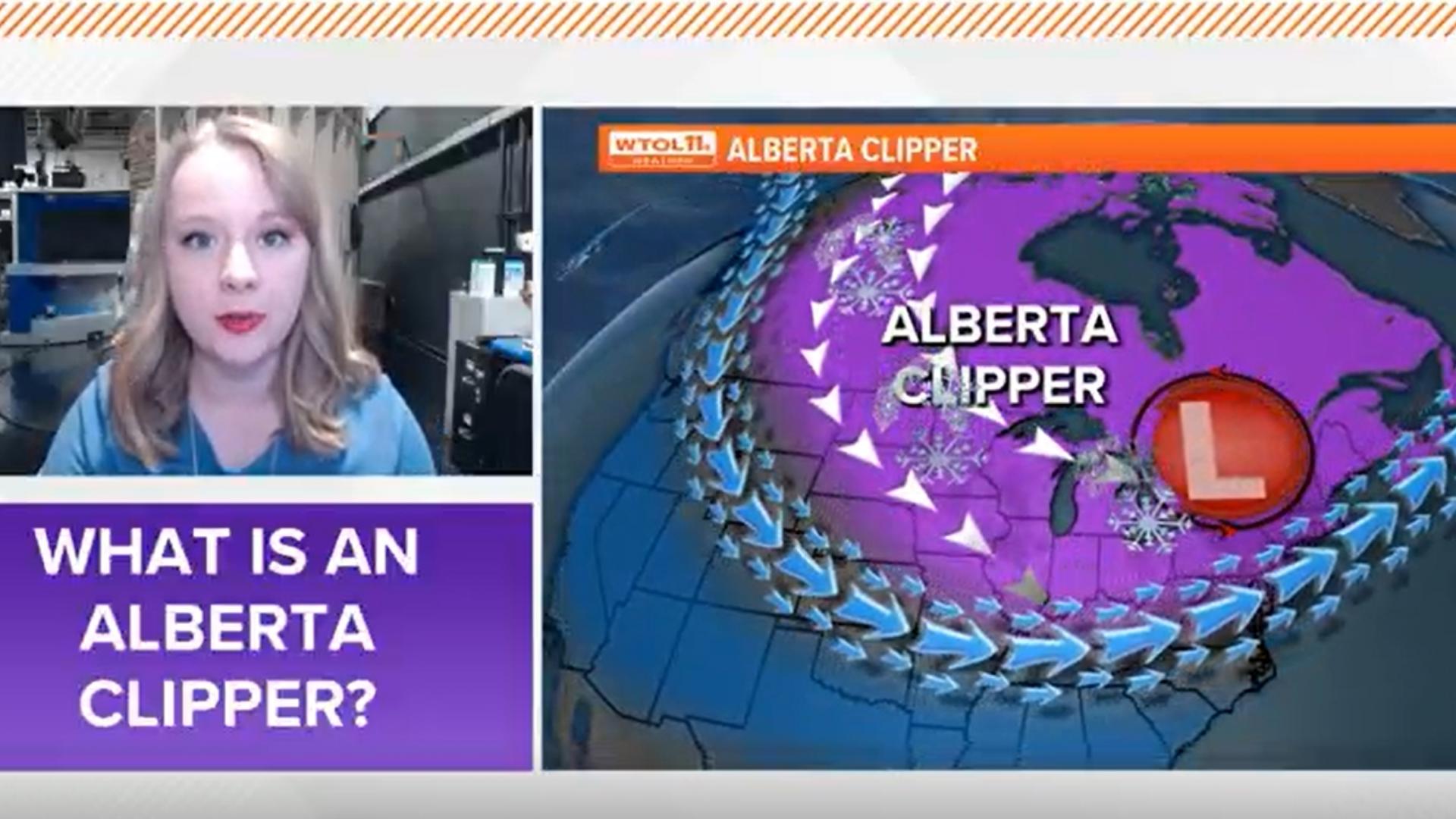TOLEDO, Ohio — Since Thanksgiving, many Americans have been dealing with the cold and some have also been dealing with the snow. Winter weather is not unusual this time of year. However, seeing cold and snow to this extent is the result of an Alberta Clipper.
What is an Alberta Clipper?
An Alberta Clipper is a low pressure system that rapidly moves from western Canada, deriving its name from the Canadian Province of Alberta. It travels into the Northern Plains, the Midwest and the Great Lakes. An Alberta Clipper draws down cold Canadian air and typically brings snow, cold temperatures and strong winds.
These systems are most common in the winter season, but can form anytime between October and March.


The WTOL 11 Weather Team has issued an ALERT DAY for Wednesday night through Thursday morning on account of an incoming Alberta Clipper expected to bring wind, cold temperatures and some snow accumulation.
What are the impacts of an Alberta Clipper?
Temperature: The largest impact of an Alberta Clipper is the drop in temperature. Once the system moves through, the bitter cold could still linger for several days. Temperatures drop so drastically due to the system bringing in the cold Canadian air.
Wind: Strong wind gusts up to 60 mph are possible with this kind of clipper system. Add in the snow, and it could create whiteout conditions for some.
Snow: Alberta Clippers stay in the Great Lakes region. Because of this, they are not able to get extra moisture from the south. This is why Alberta Clippers typically don't produce a lot of snow, but it has happened before.
Depending on the jet stream and if we are in a La Nina or El Nino, snow totals from a clipper can vary. If the jet stream dips down enough, this will help bring in the colder air that would move over the warmer water, which would create higher lake effect snow totals.


What are some other types of winter weather systems?
There are two other systems just like an Alberta Clipper: the Saskatchewan screamer and the Manitoba mauler. It just depends on the location of the formation of the system.
There are several other systems that can cause major winter weather.
A common impact people deal with in the Great Lakes region is lake effect snow. This is when you have a warm body of water and cold air moves over it and forms heavy bands of snow off of the lakeshore. This typically occurs for those who live on the eastern side of the lake, such as Cleveland, Erie and Buffalo.


Another system that many deal with during the winter is a nor'easter. This is when strong northeasterly winds blow off of the ocean near the Mid-Atlantic and New England area, which causes snow, rain and large waves.


Each of these systems are different in their own way. However, they are similar as they can cause major travel delays and safety concerns.
Stay with the WTOL 11 Weather Team for winter weather updates this week and beyond.

